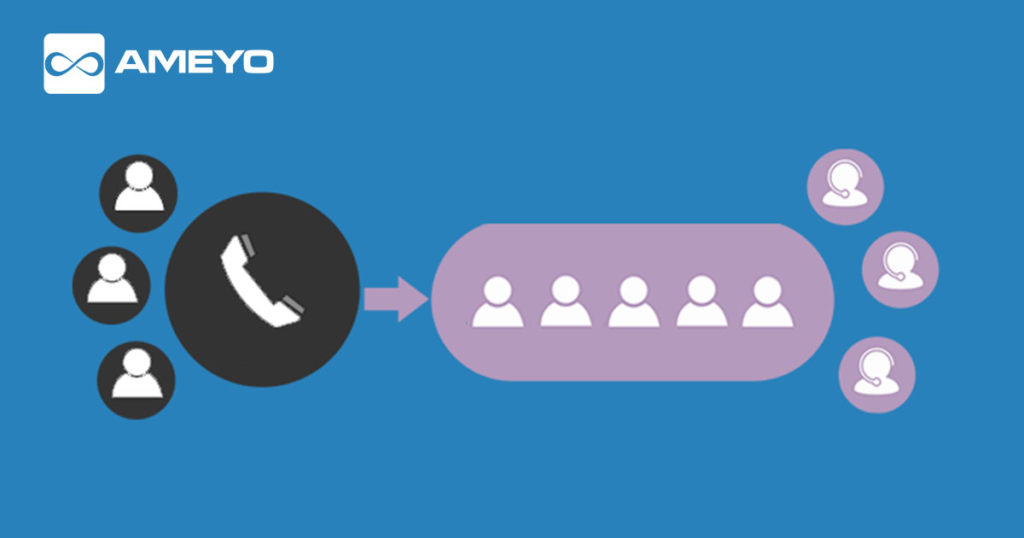Automatic Call Distribution, commonly referred to as ACD, is a systematic series of services utilized in the call-center industry. It’s primary function lies in successfully directing diverse inbound calls to their designated contact service agents.
With the expansive growth in the service providing market, ACD system’s role has evolved from beyond dispersing inbound traffic to the assigned employee to encompass varied other services.
Companies that exclusively offer ACD solutions have emerged and strived to provide innumerable service such as making outbound traffic, providing call forwarding facilities, letting customers record messages, assembling data usage and service satisfaction statistics, etc.
How does Automatic Call Distribution work?
The Automatic Call Distribution mechanism employs logistics based on routing strategy or, minimally, a database based on associated handling protocol and procedures. These rules overlook the nature and response strategies for inbound and outbound calls. And, although, the central goal of the mechanism works to achieve the fastest path to customer-agent interaction, a vast number of variables have been added to provide a more holistic set of services.
To implement this mammoth task of dispensing innumerable calls to its rightful respondent, Automatic Call Distribution systems often work in communion with Interactive Voice Response(IVR) and other Computer-telephony operatives such as Computer Telephony Integration(CTI), to route incoming calls to most appropriate agent, ensuring a higher accuracy and efficiency rate.
Incoming calls may be distributed on the basis of various techniques and protocols the ACD chooses to imply. These include linear call distribution, circular call distribution, uniform call distribution, simultaneous call distribution or weighted call distribution.
Basic Features
#1. Routing inbound calls to their appropriate agent or department based on established protocol
Calls may be diverted to specific agents or departments that are either:-
- Statistically the most qualified to address the customer’s needs
- Based on what service the customer wishes to procure, what department number is dialed, etc.
#2. Quick response to pre-specified VIP clients
ACDs may also be directed to identify, react and engage with specific clients on a faster rate, provided the VIP clients distinguishing criteria (which may include tags, integrated data systems, business tools etc.)
#3. Creating database
ACDs also provide for the creation of data usage facilities that may be beneficial for the contact centers for research and analysis purposes. This data acquired may include volume of inbound traffic, amount of time an agent spends with a caller, total number of calls (inbound and outbound), their length and the amount of time before the call was engaged, etc.
#4. Call monitoring
ACDs may also engage in services such as call monitoring and assisting agents through methods such as conferencing and whisper coaching to improve the overall service they provide.
#5. Seamless integration with CTIs
A seamless integration with CTIs ensures that agents have comprehensive information about the caller, before answering the call, to aid them in precisely addressing the customer’s needs.
#6. Automatic call back
ACDs may also offer the option of having an agent call a customer who does not wish to wait in a queue, call them back.
#7. Varied waiting queues
ACDs create varied and multiple waiting queues such as for different services, grievances, departments, information, etc.
#8. Record messages Facilities
When your contact center is dealing with high amount of call traffic and queues and call waiting facilities are functioning on extremes, ACDs organically switch over to voicemail and message recording facilities thus troubleshooting with compromising quality and a dip in customer satisfaction levels.
The scope of Automatic Call Distribution system services
What is imperative while choosing from the indistinguishable amount of options and services different ACD service provider companies offer is adaptability. Call distribution systems can be most effectively consumed when they cater to your contact centers specific and often niche requirements.
For instance,it would be of great assistance to know that Automatic Call Distributor systems often work in tangent and provide Automatic customer/caller identification, thus eliminating services such as Direct Inward Dialing, Dialed Number Identification Service, or Automatic Number Identification which supply the same information, and hence might be a redundant service.
It is of paramount importance that ACDs be customized to not just your requirements but to also in regard and reference to the amount of call volume your contact center engages and receives in a day.
Beyond calls
Automatic call distribution providers are going beyond calls, by not just expanding their services but also bringing SMS, emails and social media messages under the purview of their reach and capabilities. Thus becoming multi-channel services.
Moreover,accuracy and customer satisfaction has become integral goals ACD providers target to reach. Thus ACD systems have grown to categorize calls in a method by which the most relevant and skilled agent successfully engages the customer.
